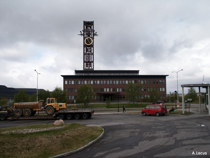Serbian municipalities awarded full ownership of streets, squares, parks and roads
Thanks to the adoption of the Serbian Law on Public Property in September 2011, towns and municipalities in Serbia now have full ownership of streets, squares, parks as well as municipal and unclassified roads,.all of which were previously nationalised.
The Standing Conference of Towns and Municipalities of Serbia (SCTM) had been advocating the decentralisation of public property for over ten years, pushing for a more rational use of property and for a reform of the public sector in Serbia. The law has now established three levels of ownership for public property: the state, provinces and local authorities.
'Towns and municipalities finally know what is theirs," states Djordje Stanicic, secretary general of SCTM. 'This law is vital as it allows for local authorities to responsibly manage the public property under their jurisdiction, to ensure the development of their local communities, to implement local projects and initiatives, and to create new conditions for employment."
Serbian local and regional authorities and CEMR
The Council of European Municipalities and Regions (CEMR) has one member association in Serbia: the Standing Conference of Towns and Municipalities of Serbia (SCTM).
Founded in 1953, the SCTM aims at strengthening local authorities through cooperation and joint action between towns and municipalities, at representing and defending their interests at the national level, and at building their capacities.
Today, the Standing Conference represents all towns and municipalities in Serbia and works on topics such as decentralisation, local economic development, urban planning, balanced regional development, energy efficiency, and ethnic and gender equality at the local level.
Presided over by Sasa Paunovic, mayor of Paracin, this association has notably created a code of conduct for local government officials and provides training for local elected representatives and civil servants.
The SCTM also provides support to its member towns and municipalities in view of Serbia's accession to the EU, which received the official status of EU candidate in October 2011. Indeed, it notably helps build and strengthen local government capacities for the effective use of EU funds.
Local and regional government in Serbia
Serbia is a unitary state in which there are 168 towns (gradovi) and municipalities (opstine), 29 counties (okruzi) and two provinces (autonomne pokrajine).
rn

Climate, Sustainable Finance Officer






